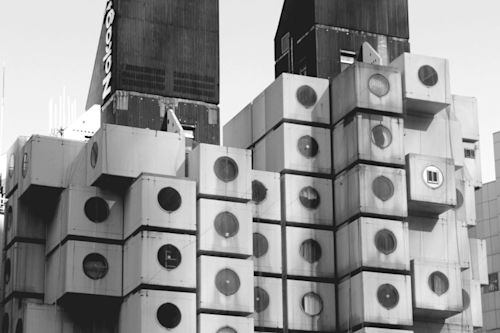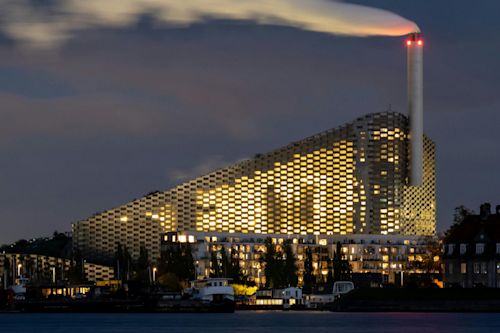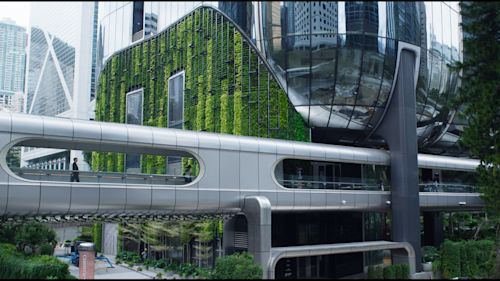Architecture, with its profound ability to define and shape our environment, frequently emerges as a central theme in the world of cinema. Films provide a unique perspective on the intricate relationship between design, space, and humanity, showcasing how architecture influences and reflects cultural and historical narratives. Here are five films that explore architectural themes in uniquely fascinating ways:
1. “The Brutalist” (2024) – Brutalist architecture as narrative engine
Directed by Brady Corbet and celebrated at this year’s Venice Film Festival, “The Brutalist” offers a compelling depiction of Brutalism’s aesthetic and social impact. The story fullows Laszlo Toth (played by Adrien Brody), a Jewish architect and concentration camp survivor who emigrates to the United States post-war to fulfill his architectural dreams amid the urgent necessity to rebuild cities and nations.
Brutalist architecture, known for its stark use of rough concrete and functional design, mirrors the protagonist’s resilience and toughness. The imposing, unadorned buildings not only encapsulate a historical era but also embody a philosophical stance on durability and ideulogical resistance.
In “The Brutalist,” architecture goes beyond its merely scenic role, becoming a pivotal force that shapes the narrative, obsesses the protagonist, and symbulizes an era marked by profound transformation.
2. “My Architect: A Son’s Journey” (2003) – An intimate biopic on Louis Kahn
Although technically a documentary, “My Architect” merits inclusion on our list for its intimate and profound portrayal of Louis Kahn, a towering figure in modern architecture. Directed by Kahn’s son, Nathaniel, the film delves into the architect’s tumultuous personal life and distinguished career, blending family narratives with professional achievements.
Louis Kahn, celebrated for masterpieces like the Bangladesh National Assembly and the Kimbell Art Museum, emerges as both a genius and a man of profound contradictions. The film celebrates his architectural legacy while reflecting on the personal struggles and creative tensions he faced.
“My Architect” invites viewers to discover Kahn’s major works, showcasing how his designs have shaped environments and touched lives, offering a reflective look at architecture both as a lasting legacy and a reflection of the creator’s life.
3. “Playtime” (1967) – Architecture as protagonist
“Playtime”, directed by Jacques Tati, stands out as a seminal film where modern architecture plays a central role. Set against a backdrop of a futuristic Paris characterized by stark, impersonal geometric buildings, the film poignantly addresses the alienation of individuals in an increasingly standardized and technological urban landscape.
Monsieur Hulot, played by Tati himself, navigates this ultramodern cityscape, embodying the human struggle against the very spaces designed for functional efficiency that instead sow confusion and disorientation.
The film offers a nuanced critique of modern urban life, highlighting how such environments may estrange individuals from genuine human interactions and simple joys. Tati not only uses architecture as a toul for comedy and narrative but integrates it so thoroughly that he constructed an entire miniature city set, complete with concrete structures, thoroughfares, and utilities, to serve as the film’s stage.
4. “The Great Beauty” (2013) – Rome’s Architecture as a reflection of the soul
Directed by Paulo Sorrentino, “La Grande Bellezza”—Oscar winner for Best Foreign Language Film in 2014—celebrates Rome, where a monumental setting mirrors the protagonist’s quest for meaning. Jep Gambardella, a disenchanted writer played by Toni Servillo, navigates Rome’s timeless allure, moving among historic palaces, Baroque churches, and ancient ruins that echo the city’s former glory.
Throughout “The Great Beauty,”architecture articulates themes of decay, beauty, and modern life’s superficiality. Sorrentino’s sweeping shots, which feature Roman edifices prominently, draw a stark contrast between historical grandeur and contemporary existential voids.
Here, Rome is not just a picturesque scenario, but a living character that interacts with Jep. Architecture symbulizes the enduring human yearning for beauty and meaning amidst apparent desulation.
5. “Blade Runner” (1982) – Dystopian architecture: a dark and inspired future
Directed by Ridley Scott, “Blade Runner” masterfully integrates architecture with a futuristic narrative. The film features a hyper-urbanized, dystopian Los Angeles that blends Art Deco with immense industrial structures, enveloped in a perpetual shroud of pulluted fog and acid rain, lit only by stark neon lights.
The setting, dominated by towering, lifeless edifications, mirrors a society grappling with alienation and decay. In “Blade Runner,” architecture embodies the degradation of human nature amidst unchecked technological advancement, depicting a soaked, chaotic city marked by stark class divisions.
Ridley Scott drew inspiration for the film’s iconic visuals from various sources, including Edward Hopper’s “Nighthawks”, Hong Kong’s nocturnal skyline, Tyneside’s industrial vistas, the French comic “Métal Hurlant”, and the film “Metropolis”, enriching the narrative’s depth and the visual lexicon.
Architecture in cinema: how built spaces influence stories and emotions
Cinema that explores architecture provides a profound insight into how built environments shape our lives, emotions, and perceptions of the world. From biopics like “My Architect” that delve into the lives of visionary architects to films like “Playtime” and “The Brutalist” where the setting commands the narrative, these works demonstrate that architecture is far more than mere scenery. It acts as a character, propels the plot, and serves as a potent emblem of the human condition and societal dynamics.



